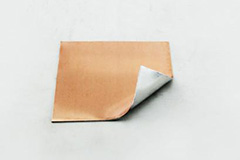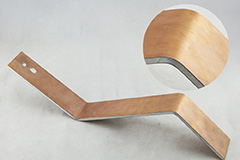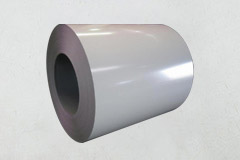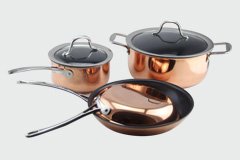Copper and the copper alloys are some of the most versatile materials available and are used for applications in every type of industry with world consumption of exceeding 14 million tonnes per annum. Besides good conductivity the properties include strength, hardness, ductility, resistance to corrosion, wear and shock, low magnetic permeability, an attractive range of colours together with ease of machining, forming, polishing and plating. Over the years a number of materials have been developed giving combinations of these properties that are optimum for a very wide variety of applications.
Copper is a chemical element in the periodic table that has the symbol Cu (Latin: cuprum) and atomic number 29. It is a ductile metal with excellent electrical conductivity, and finds extensive use as an electrical conductor, heat conductor, as a building material, and as a component of various alloys.
Copper is a reddish-colored metal, with a high electrical and thermal conductivity (silver is the only pure metal to have a higher electrical conductivity at room temperature). Pure copper's melting point is 1,981ºF (1,083ºC).
Location in the periodic table
Copper occupies the same family of the periodic table as silver and gold, since they each have one s-orbital electron on top of a filled electron shell. This similarity in electron structure makes them similar in many characteristics. All have very high thermal and electrical conductivity, and all are malleable metals.
Physical Properties
Like gold and silver, copper is malleable. That is, it can be bent and shaped without cracking, when either hot or cold. It can be rolled into sheets as thin as 1/500 of an inch.
Copper also is ductile, that is, it can be drawn out into thin wire. A copper bar 4 inches thick can be heated, rolled, then drawn into a round wire so thin that it is thinner than a human hair. This wire is 20 million times longer than the original bar!
Industry valued copper for these properties. Copper is second only to silver in its ability to conduct electricity, but silver is too expensive for this sort of use. Bronze and brass, however, do not conduct electricity as well as pure copper.
Besides electricity, copper also is an excellent conductor of heat, making it an important metal in cookware, refrigerators, and radiators.
Copper is resistant to corrosion, that is, it will not rust. If the air around it often is damp, it will change from its usual reddish orange color to reddish-brown. Eventually, it is coated with a green film called a "patina" that stops all further corrosion.
The melting point of copper is 1083.4 degrees Centigrade. Liquid copper boils at 2567 degrees Centigrade.
Electrical conductivity
Vending machines that sell drinks, crisps, chocolate etc. always check that the correct coins have been put in. One of their tests is to measure the electrical resistance of the coins. The composition of the new Euro coins was selected to give them exactly the right electrical resistance.
Durability
Copper’s corrosion resistance properties mean that these coins don't tarnish easily - i.e. they stay nice and shiny for a long time. The Euro coins are expected to last for 30 years.
Copper can be recycled when the coins reach the end of their useful life. The coins can be melted down to make new copper alloys. Or it is possible to refine them using electrolysis to make very high purity copper (99.9% pure). They can then be used for the highest quality applications.
Numerous reports by institutes specialized in research of quality and durability of copper tubes highlight their stability in environments where they are installed. The lower limit of their stability is proved for the minimum period of 50 years, not only regarding the external environment (when they are installed into earth, wall, mortar, concrete, plaster ...) but also to the effect of fluids transported through them. They are particularly resistant to water (hot and cold) and to numerous industrial liquids, solutions and gasses.
Installation
Copper tubes are joined together using fittings. Professional pipe fitters usually opt for one of the following methods to join copper tubes:
soft soldering;
hard soldering;
mechanical fittings;
combined fittings.
Straight pieces can be joined together without fittings, so as to widen the pipe end with suitable tool, i.e. to make a bell and insert the end of another tube into it and solder them together.
Copper tube joints are compact, solid and resistant to high pressures, dynamic shocks and vibrations.





